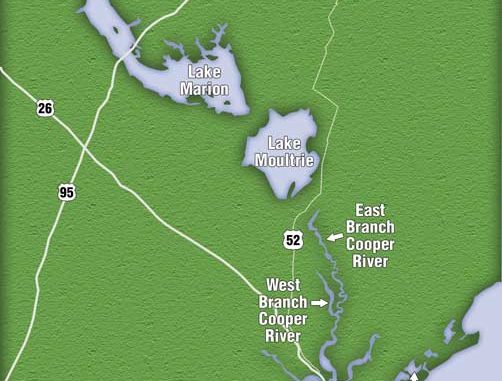
Success on Lowcountry public waters is there for the taking.
When the sun rose over the Lowcountry during the first week of duck season last year, it was a big payoff for Matt Didelot of Summerville.
Didelot, a school teacher in Berkeley County, had spent hours and hours pouring over maps and satellite photos on the internet, then scouting out places known and unknown — by car and boat.
To report that ducks flew into his spread, that he made two tough going-away shots and took three more ducks, wings cupped and committed to land — and all on public land — doesn’t do justice to the kind of success Didelot had that first day.
Such scenes may occur regularly in waterfowl flyway states like Mississippi, Arkansas and Louisiana, and even North Carolina and Virginia, but when they take place in South Carolina, they aren’t regular or simple.
A great day in a duck blind takes much work and planning, and that made Didelot’s success that much sweeter.
Duck numbers in South Carolina have fluctuated tremendously. Early on, ducks along the Atlantic flyway once darkened the sky, and South Carolina was an important stopover for birds making their way south, as the Lowcountry rice plantations attracted them by the thousands.
But as land uses changed, so did waterfowl’s food sources; hunting pressure increased, and a number of factors combined to shrink the population of ducks that used the Atlantic flyway. Conservation efforts have managed to put a stopper in much of the decline, but duck hunting in South Carolina has ceased to be easy. Today, to be consistently successfully, you have to put in your time.
“Too many duck hunters think all it takes is to go out anywhere on the water, throw out a dozen decoys, and call them in and kill ’em,” Didelot said. “Compare that to deer hunting; you don’t just go out in the woods, sit under any tree and shoot a nice buck. You have to put the time in scouting, knowing what the deer are doing, where they want to go, and why they go there. Likewise, you have to understand ducks.”
Didelot said that ducks also have favored feeding areas, resting areas, and travel corridors. With a duck’s home range a thousand times larger than a deer’s, many of the ducks in the Lowcountry are just passing through, so the job becomes that much harder.
“I figure I spend about twice as much time in the boat and in the truck scouting for ducks than I do actually hunting them,” he said. “If you’re going to kill ducks, you’ve got to know what they’re eating and where they’re finding food. Past experience is a big help, but you still have to get out in the boat with a pair of binoculars and actually see what food is out there, when the ducks are eating it and where they go before and after they’re done feeding.”
Didelot confines most of his public duck hunting to areas within an hour’s drive of his home. That encompasses both Santee Cooper reservoirs, plus the freshwater run of the Cooper River and some saltwater marshes just north and south of Charleston Harbor.
Likely food sources for ducks are naturally occurring, since manipulation or planting of crops on public land isn’t feasible. Didelot has to have a working knowledge of where to find aquatic vegetation that ducks prefer in both swamps and salt marshes, as well as mast crops like acorns, berries and nuts that grow close to the water.
“Some of the old accessible rice plantations along the various reaches of the Cooper River have grown over with hydrilla,” he said. “Down in the marshes along the Intercoastal (Waterway), you can look for stands of spartina and eel grass, and then in the cypress swamps both above and below the two lakes, there will be acorn crops and other mast fruit that falls into the water.”
Didelot said that some public-and hunters get frustrated because many of the Lowcountry’s big plantations draw and retain a large population of ducks that overwinter in the area. He said that learning transition areas, travel corridors where ducks access food sources plays a large role in having success — even if he can’t access the plots themselves.
“Most ducks will use an area to feed in the morning, then find somewhere quiet to sit through the middle part of the day and then travel back to a roosting area in the evening,” he said. “Combine that knowledge with weather patterns that push new birds in and old birds out, and it can be a real challenge — but it’s not impossible to pattern them.”
Whether he’s hunting a marsh somewhere behind the Isle of Palms, a deteriorated rice field on one of the branches of the Cooper, or in the Sparkleberry Swamp above Lake Marion, Didelot likes to keep his tactics simple. If he’s in an area where it’s legal to hunt from a boat, he’ll hide it and lower his profile by hiding behind whatever cover is available. Otherwise, he has to combine hunting areas with areas that also afford enough cover to break up the outline of a boat blind so it will be more effective.
When it comes to decoys, he typically finds that less is more, and that adding movement to a smaller number of dekes helps him kill more ducks than an armada of motionless stools. He approaches calling in the same manner; he wants ducks to know he’s there, but he’s not real interested in striking up a conversation.
“I’ll use more decoys if I’m hunting divers on open water, like up on one of the lakes, but for most everything else, I prefer quality over quantity,” said Didelot. “I prefer to attach a jerk cord to a string of a dozen decoys and have all of them move at my command rather than have one or two spinning wing decoys that don’t affect the whole spread. As for calling, I’d rather be in the right place — where the ducks want to be — at the right time than have the skills of a world-champion caller.”
While public-land duck hunting is more feasible for a majority of hunters, private-land alternatives are available, and it doesn’t take a centuries old plantation to create them.
Mark Shepherd of Monks Corner founded Aquatic Weed Management nearly 14 years ago. He specializes in pond and small-impoundment construction and has completed a number of projects for landowners wanting to create their own duck-hunting spots.
With your own facility, deciding where to hunt is a no-brainer, but solving that problem doesn’t exactly make duck hunting a cake walk. There’s still plenty of preparation to get and keep the birds within gun range.
“Most of the impoundments we build range from five acres up to 90 acres,” Shepherd said. “With your own impoundment, it’s more like having your own deer club or dove club. The focus doesn’t have to be ‘Where am I going to hunt?’ or getting up at 2:30 a.m. to be the first one into a good spot, then, after you’re there, have some Tom, Dick, or Harry come set up outside your decoys. It’s a fellowship thing. We can concentrate on the friends, family, and camaraderie of hunting, but there’s still a lot of work involved.”
With close to 50 impoundments dotting the landscape surrounding his Pinewood Farm near the border between Sumter and Clarendon counties, Shepherd and his fellow duck hunters realize that timing is important to everyone having ducks to shoot. Most of the impoundments are hunted on Saturday mornings — and occasionally Wednesday mornings, later in the season. Monitoring the daily activities of birds on his pond, and knowing how his food supply is holding out, are key ingredients to a season of successful hunts.
“We draw a lot of ring-necks into our pond, plus, we see a few redheads, pintail, and a variety of local ducks, including a lot of summers,” he said. “And just about all of the local ponds will put out release mallards — which we treat as a bonus. Some guys won’t shoot them, and that’s okay, but they’re a great opportunity for kids to have something to shoot while waiting for other ducks to come in.”
A private impoundment also provides the luxury of putting up permanent blinds. Calling birds is more habit than necessity, since ducks are coming to eat, and his blinds are right in the middle of the flooded crops. Interestingly, Shepherd relies on decoys more during the pre-season than after the shooting starts.
“We use a bunch of ring-neck decoys to get them to notice our pond when they first get down to our area,” he said. “After that, we’ll move them around before each hunt. Like most of these impoundments, we’ll also have a couple hundred summer ducks (wood ducks) roost here every night. The trick with them is to try to get hunters around the pond and set before the summers leave at daylight — if one guy steps foot in the pond before legal light, he’ll run all of them out before a shot can be fired.”

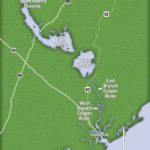
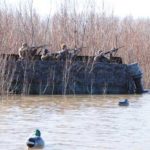
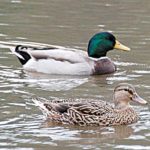
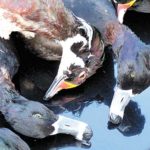
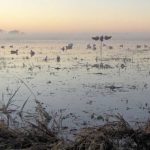
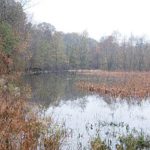




Be the first to comment